If a person has a crazy personality, he will most likely have difficulty in society, and will probably be a frustrated loser in officialdom and business. However, a person with a crazy personality in art will most likely be an outstanding achiever. Because these people have their own life beliefs and artistic pursuits and are not influenced by others. The same goes for calligraphy freaks. The following ten crazy people did little in politics, but made amazing achievements in the art of calligraphy.
1. Wang Xizhi: People at that time called it "not like Changliu".
Wang Xizhi (303-361, 321-379), courtesy name Yishao, Han nationality, was a famous calligrapher during the Eastern Jin Dynasty and was known as the "Sage of Calligraphy".
What's wrong:Wang Xizhi was known as "The Bone Man". Although he came from a powerful family, he was not interested in politics. People at the time called him "unconventional". Taiwei Xi Jian sent people to Wang's family to choose a son-in-law. He "eat on the east bed with an open stomach, as if he didn't hear anything", which shows his madness. But Wang Xizhi's brilliant calligraphy achievements established him as a calligrapher in history.
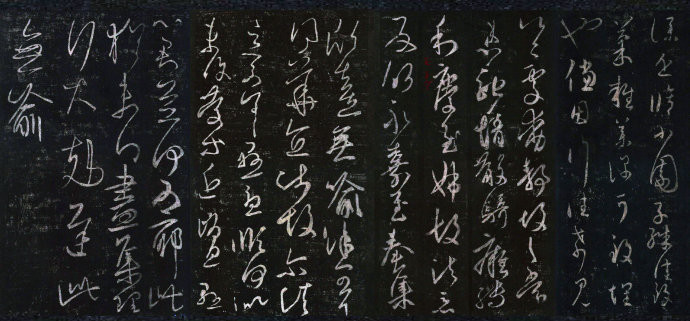
Wang Xizhi's calligraphy
2. Zhang Xu: He was fond of drinking. He often drank and got drunk. When he was drunk, he often dipped his hair in ink to write.
Zhang Xu (675-about 750), also known as Bogao and Jiming, was a Han nationality and a native of Wuxian County (now Suzhou, Jiangsu Province) in the Tang Dynasty. He was alive during the Kaiyuan and Tianbao periods. He served as a county captain in Changshu and a long history official in Jinwu.
What's wrong:Because of his crazy personality, he was called "Zhang Dian" at that time. Although he was unsuccessful in politics, he "dedicated himself to writing. He could not move his throne, he could not surrender to poverty and humbleness, and he was proud and contented for the rest of his life." He was fond of drinking, often drunk, and often dipped his hair in ink to write. The genius of writing has made Zhang Xu known as "the first person to write wildly".
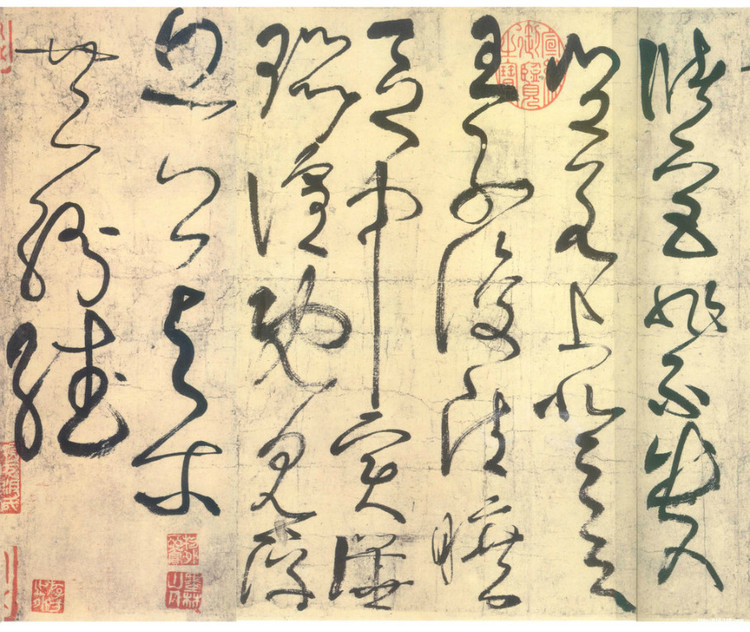
Zhang Xu calligraphy
3. Yang Ningshi: He pretended to be crazy and stupid to protect himself, and was known as "Crazy Yang" at the time.
Yang Ningshi (873-954), courtesy name Jingdu and pseudonym Xubai, was a native of Huayin, Shaanxi. During the reign of Emperor Zhaozong of the Tang Dynasty, he was a Jinshi and an official secretary. He served as an official in the Later Liang, Tang, Jin, Han, and Five dynasties, and reached the position of Prince Taibao. He was known as "Yang Shaoshi" in the world.
What's wrong:Yang Ningshi of the Five Dynasties was born in troubled times. He pretended to be crazy and acted foolishly to protect himself. He was known as "Crazy Yang" at the time. He served as an official in the five dynasties of Later Liang, Later Tang, Later Han, Later Jin, and Later Han. He seemed to have achieved something politically, but in his heart he kept a distance from those in power and pursued the art of calligraphy. His calligraphy has exquisite structure, elegant charm and unique style. Huang Tingjian praised and said, "Everyone in the world has learned about Lanting Noodles and wants to exchange it for mortal bones without golden elixirs. Who knows that Madman Yang in Luoyang went to Wusilan to write".
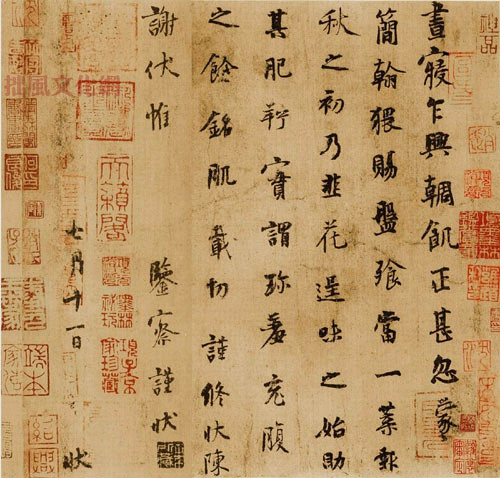
Yang Ning style calligraphy
4. Mi Fu: He is wild and wild, so he is called Mi Dian.
Mi Fu [fú] (1051-1107), calligrapher and painter of the Northern Song Dynasty. His ancestral home was Taiyuan, Shanxi, and he moved to Xiangyang, Hubei, and later settled in Runzhou (now Zhenjiang, Jiangsu). One of the four families of Song Dynasty. He once served as school secretary, doctor of calligraphy and painting, and wailang of the Ministry of Etiquette.
What's wrong:Mi Fu was a wild man and was known as Mi Dian. He devoted himself to learning from the best of hundreds of schools of calligraphy, and finally found a personal calligraphy path. His running script is neat and refreshing, with a straight and straight structure, reaching a state of perfection. Later generations learned the word rice like a crucian carp crossing a river, but they did not reach the height of Su Shi's comment on the word rice: "Wind Qiang arrays horses, calm and happy". It can be said that you can learn to be similar in appearance, but you cannot learn to be similar in spirit.
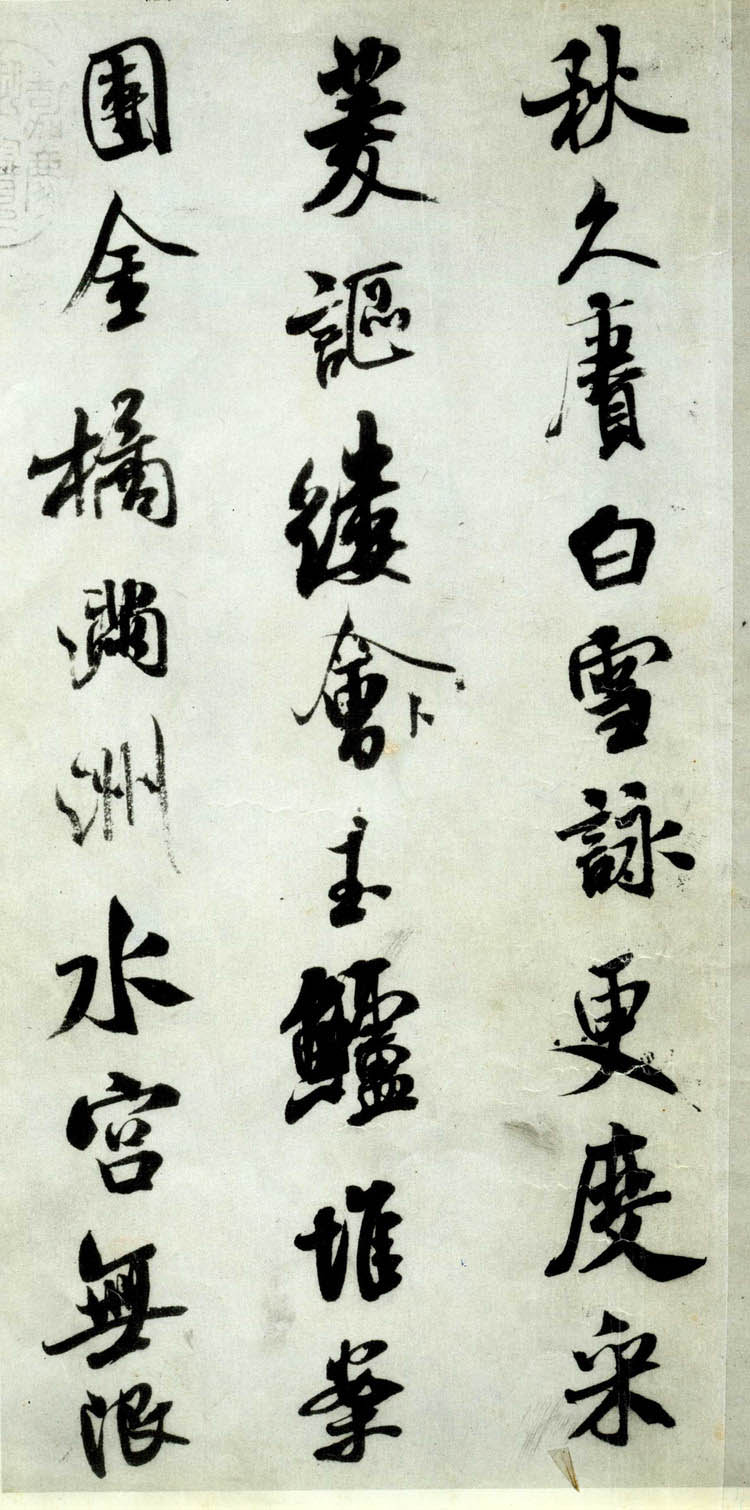
Mi Fu calligraphy
5. Zhao Ji, Emperor Huizong of Song Dynasty: He did nothing politically, but he was very obsessed with art.
Song Huizong Zhao Ji (May 5, 1082 AD - June 5, 1135 AD), the eleventh son of Song Shenzong, the younger brother of Song Zhezong, and the eighth emperor of the Song Dynasty. He was successively named King of Suining and King Duan.
What's wrong:The strange thing about Song Huizong is that as an emperor, he did nothing politically and was ignorant and incompetent, but he was very obsessed with art and made extraordinary achievements in literature, calligraphy, and painting. It seems that "men are afraid of choosing the wrong career" makes sense. But Song Huizong could not choose his own life path, and his tragedy was inevitable.
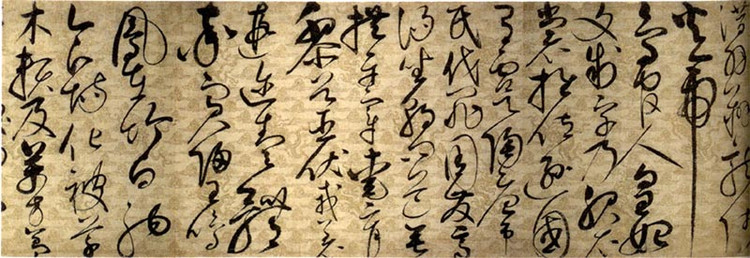
Song Huizong calligraphy
6. Yang Weizhen: His calligraphy is unconventional and unconventional. People say that "the stippling is messy and has the style of troubled times".
Yang Weizhen (1296-1370) was a famous poet, writer, calligrapher, painter and dramatist in the late Yuan and early Ming dynasties. His courtesy name was Lianfu, and his nicknames were Tieya, Tiedi Taoist, Tiexin Taoist, Tieguan Taoist, Tielong Taoist, Meihua Taoist, etc. In his later years, he called himself Laotie, Baoyi Laoren, Dongweizi, Fengqiao Quan in Kuaiji (Zhuji, Zhejiang). Tangren.
What's wrong:Yang Weizhen in the Yuan Dynasty had an upright character, so his official career was not smooth. At the end of the Yuan Dynasty, the peasant uprising broke out, and he disappeared from the world. Yang Weizhen's calligraphy can be described as "ugly calligraphy", which is incompatible with the calligraphy style of Zhao Mengfu, the leader of the calligraphy circle in the Yuan Dynasty. People say that his stippling is messy and has the style of troubled times. But Yang Weizhen's calligraphy is unique and unique, which is the most valuable quality of a calligrapher.
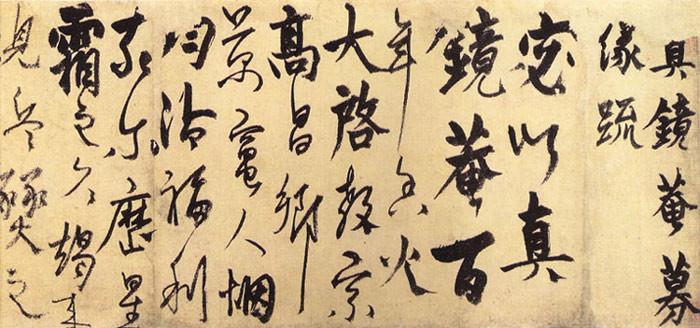
Yang Weizhen's calligraphy
7. Xu Wei: He suffered from schizophrenia and was imprisoned for six years for killing his wife.
Xu Wei (1521-1593), Han nationality, was born in Shanyin, Shaoxing Prefecture (now Shaoxing, Zhejiang). The original name was Wenqing, later changed to Wenchang, and his nickname was Tianchi Shanren, or Tian Shuiyue, Tian Danshui, Qingteng Laoren, Qingteng Taoist, Qingteng layman, Tianchi Yuyin, Jinlei, Jinhuishanren, Shan Other nicknames include Yin Buyi, Baijiu Shanren, and Ebi Shannong. Chinese writer, calligrapher and painter of Ming Dynasty.
What's wrong:He suffered from schizophrenia and was imprisoned for six years for killing his wife. His life was rough and his later life was miserable. Influenced by Wang Yangming's philosophy of mind, he advocated that "it begins with learning and ends with nature", and "what is made by nature does not come from heaven, but comes from oneself and not from others." Due to his unique artistic value concept, he has made amazing achievements in poetry, calligraphy, painting, opera and other aspects. Xu Wei's calligraphy is majestic and emphasizes spirit rather than form. It is not only a catharsis of individual emancipation thoughts, but also an expression of melancholy and anguish.
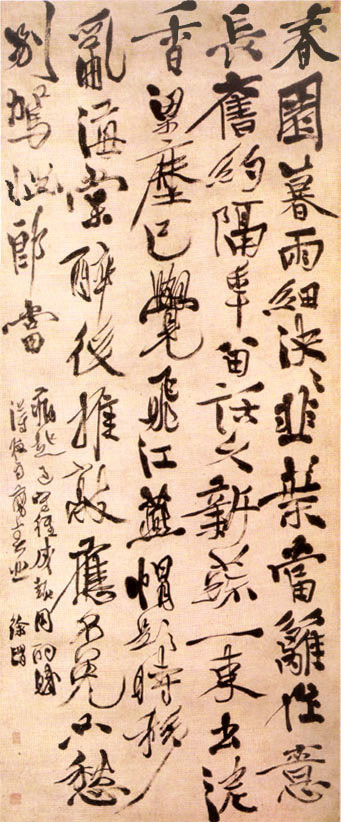
Xu Wei calligraphy
8. Gold farmer:Friends have a strange temperament, and they will look down upon those they look down upon.
Jin Nong (1687-1763) was a calligrapher and painter of the Qing Dynasty and the leader of the Eight Eccentrics of Yangzhou. The names were Shoumen, Sinong, Jijin, Mr. Dongxin, Jiliu Shanmin, Qujiang Waishi, Xiye Jushi, etc. He was a native of Qiantang (now Hangzhou, Zhejiang), and lived in commoner life.
What's wrong:As one of the Eight Eccentrics of Yangzhou, Jin Nong is very bold in the pursuit of artistic style. He is committed to the artistic pursuit of "no slave books and maid books", pursues innovation and change, and has achieved high artistic achievements.
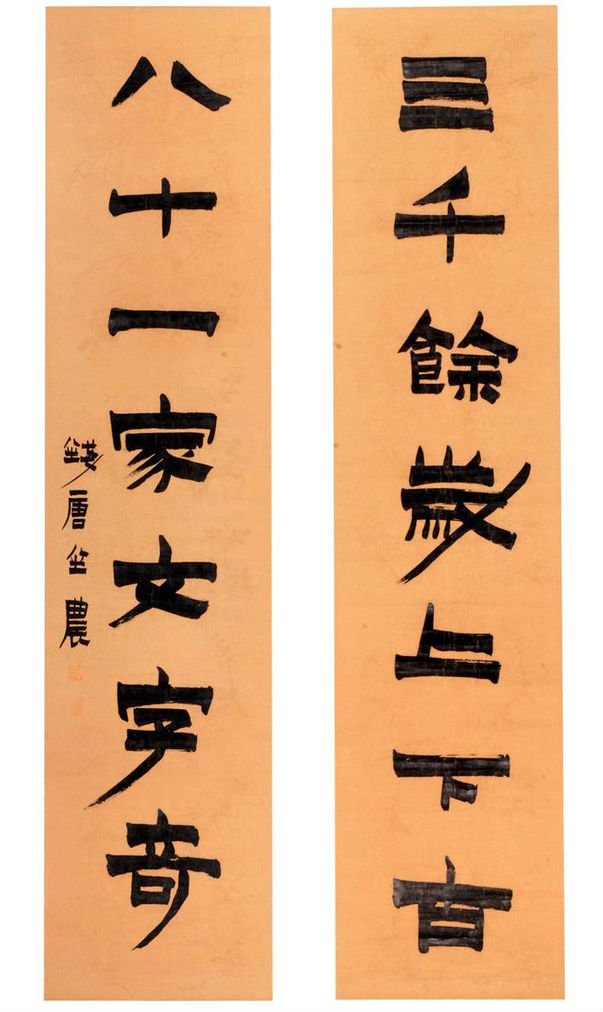
Jin Nong calligraphy
9. Deng Shiru: Don’t buy into the account of the powerful Weng Fanggang.
Deng Shiru (1743-1805), a great calligrapher in the Qing Dynasty. Han nationality, from Huaining, Anhui. Seal engraver, calligrapher and founder of Deng School in Qing Dynasty.
What's wrong:Deng Shiru is a real calligrapher of ordinary people. His madness is reflected in his refusal to pay the bills of the powerful Weng Fanggang in the capital. As a master of seal calligraphy in the Qing Dynasty, Deng Shiru made an indelible contribution to the development of the Stele School calligraphy. A man of great skill is bold, and his madness is understandable.
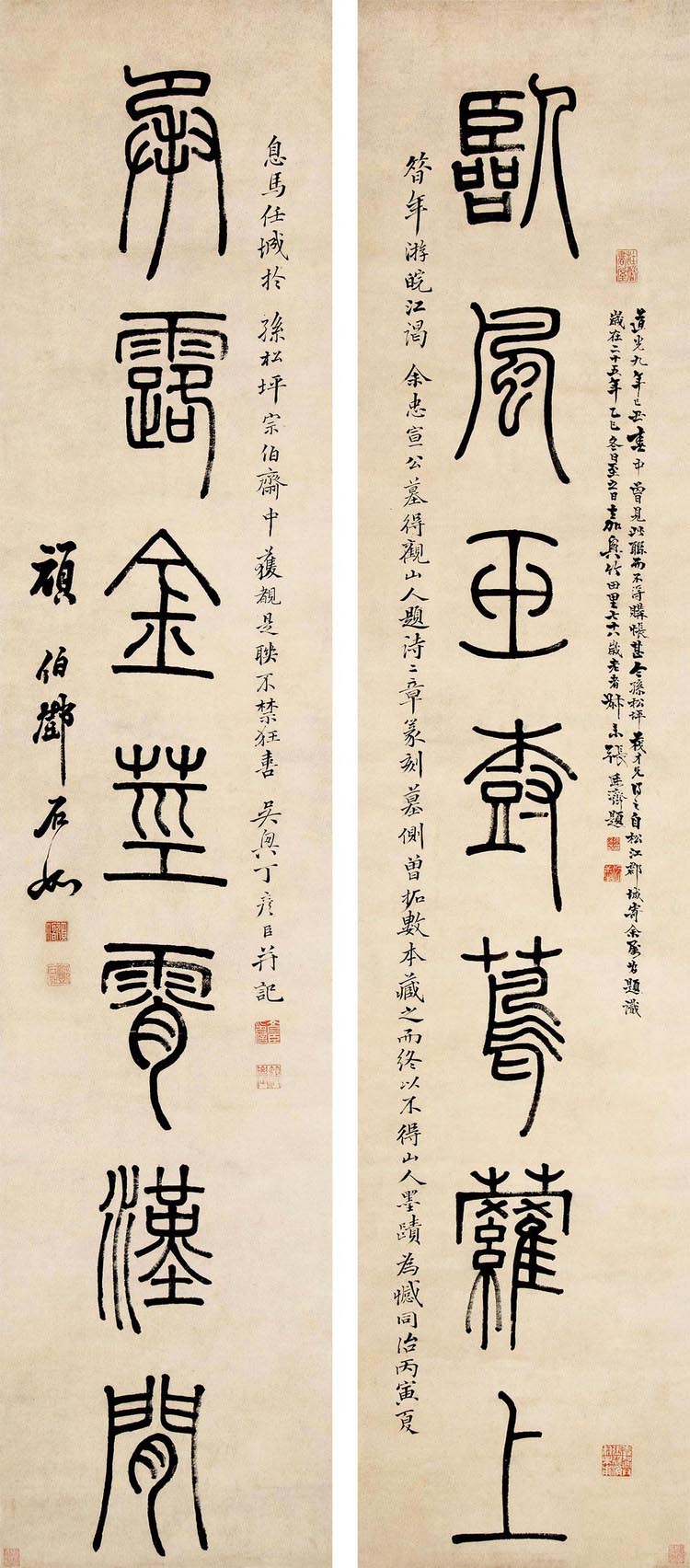
Deng Shiru calligraphy
10. Wu Changshuo: After serving as county magistrate for one month, he resigned to pursue a career in art.
Wu Changshuo (1844.8.1-1927.11.29), whose original name was Jun, also known as Changshuo, also known as Foulu, Kutie, etc., was a Han nationality and a native of Anji, Zhejiang. A key figure in the transitional period of the development of modern and modern Chinese calligraphy and painting art.
What's wrong:The strange thing about Wu Changshuo is that he resigned from office just one month after he became the county magistrate. To him art is more important than official position. This kind of thinking is not something ordinary people have. It is this very human value pursuit that has made Wu Changshuo a great calligrapher and painter of his generation.
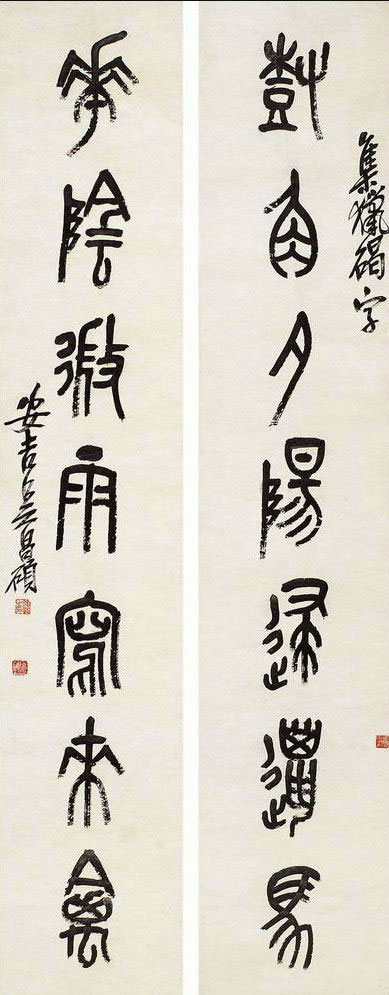
Wu Changshuo calligraphy








